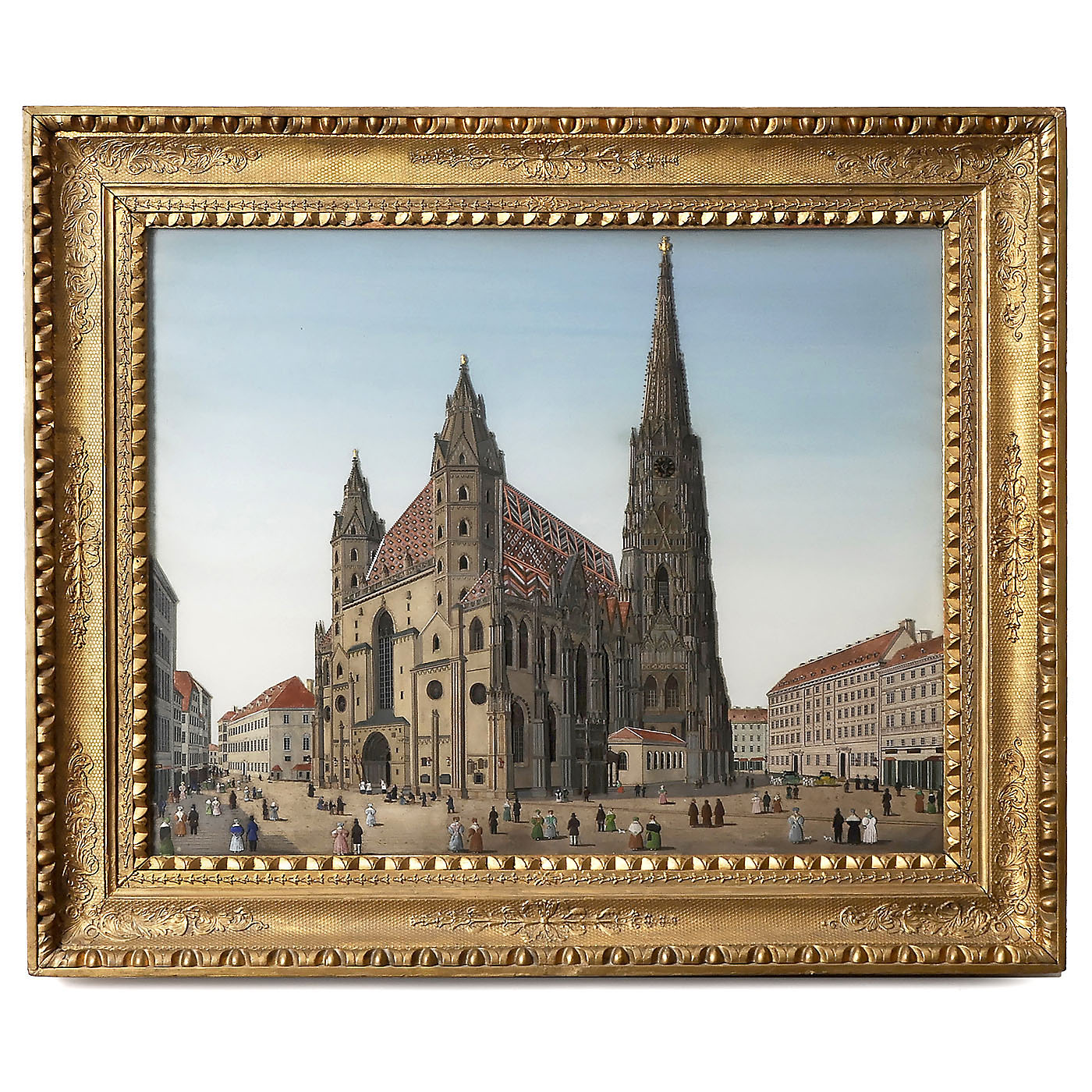
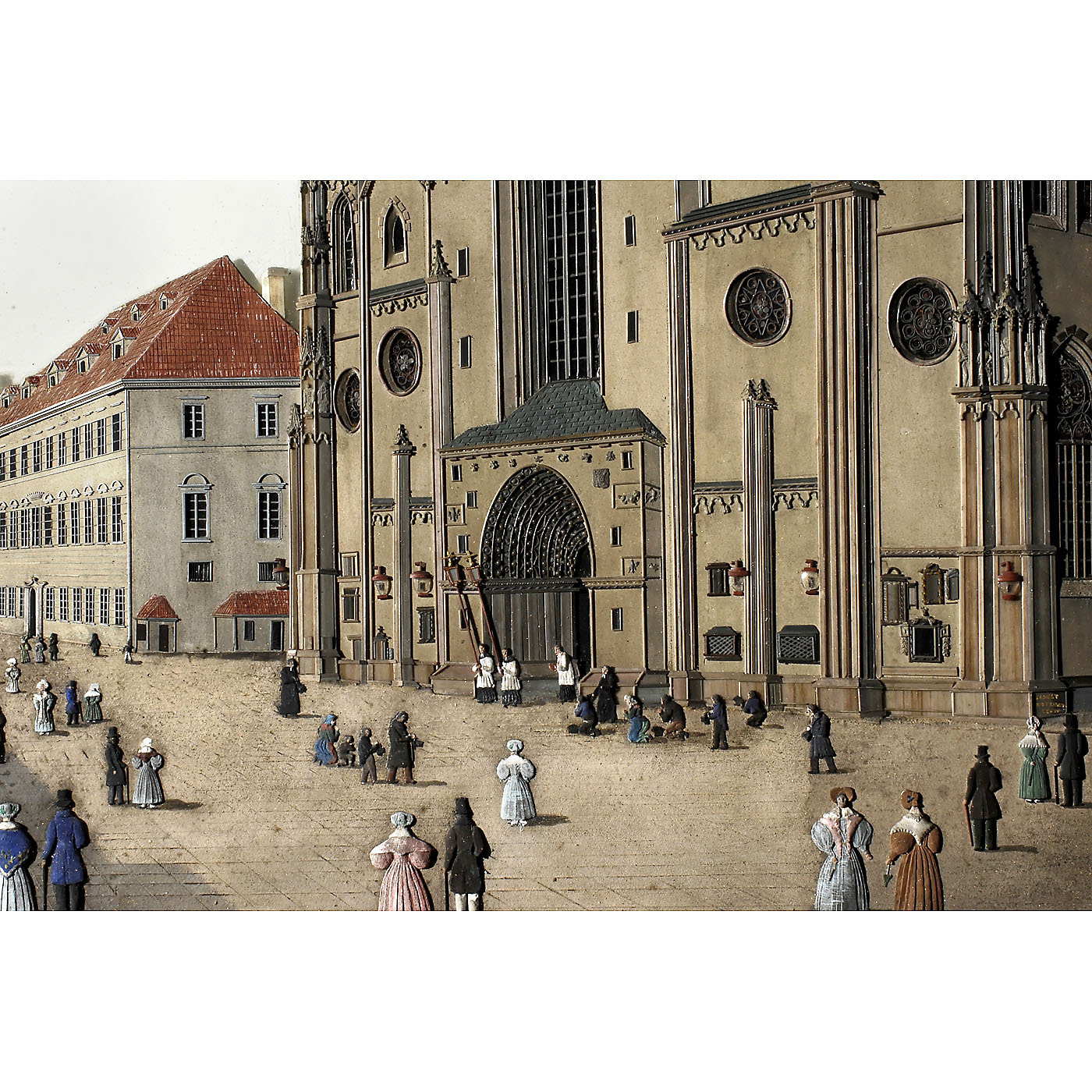
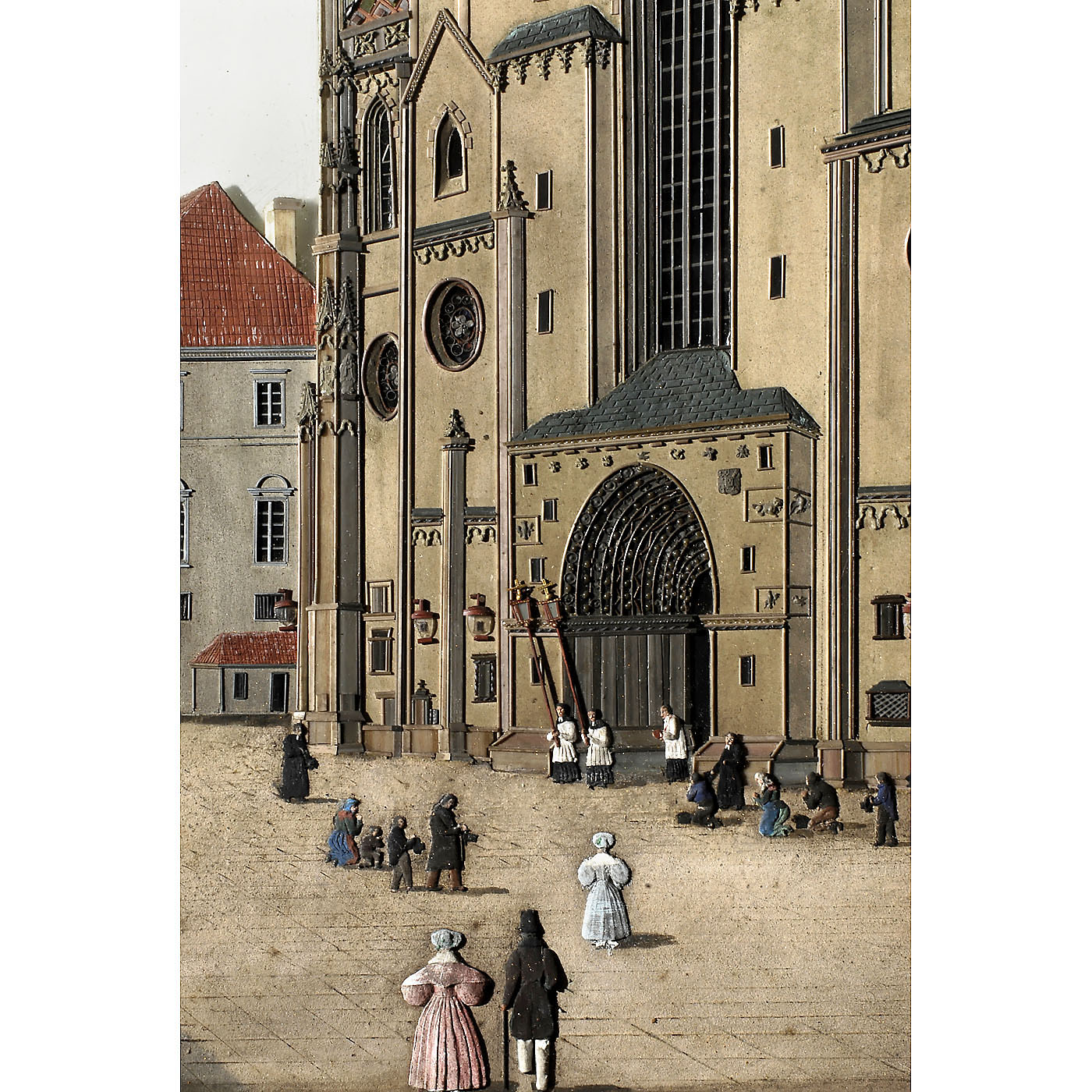
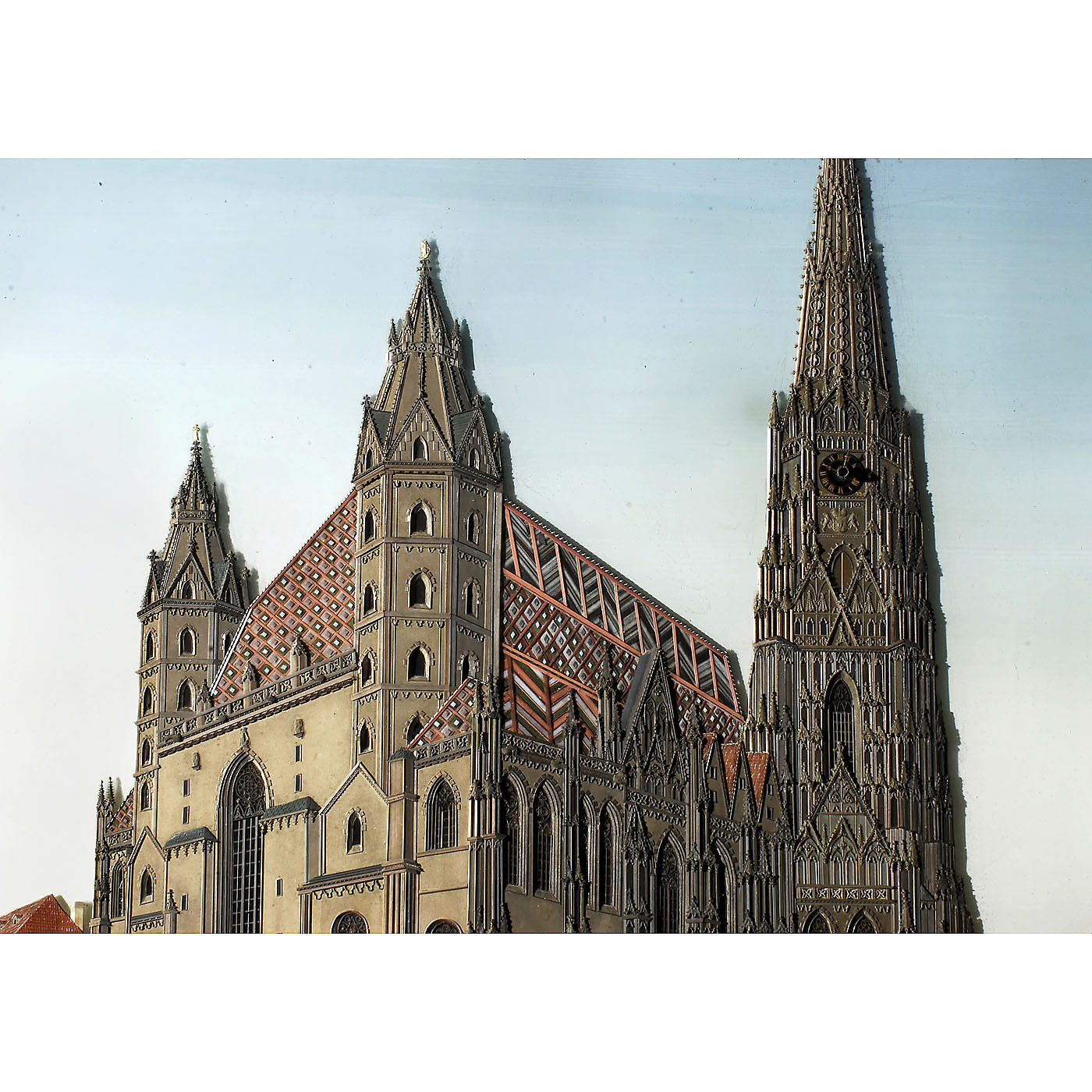
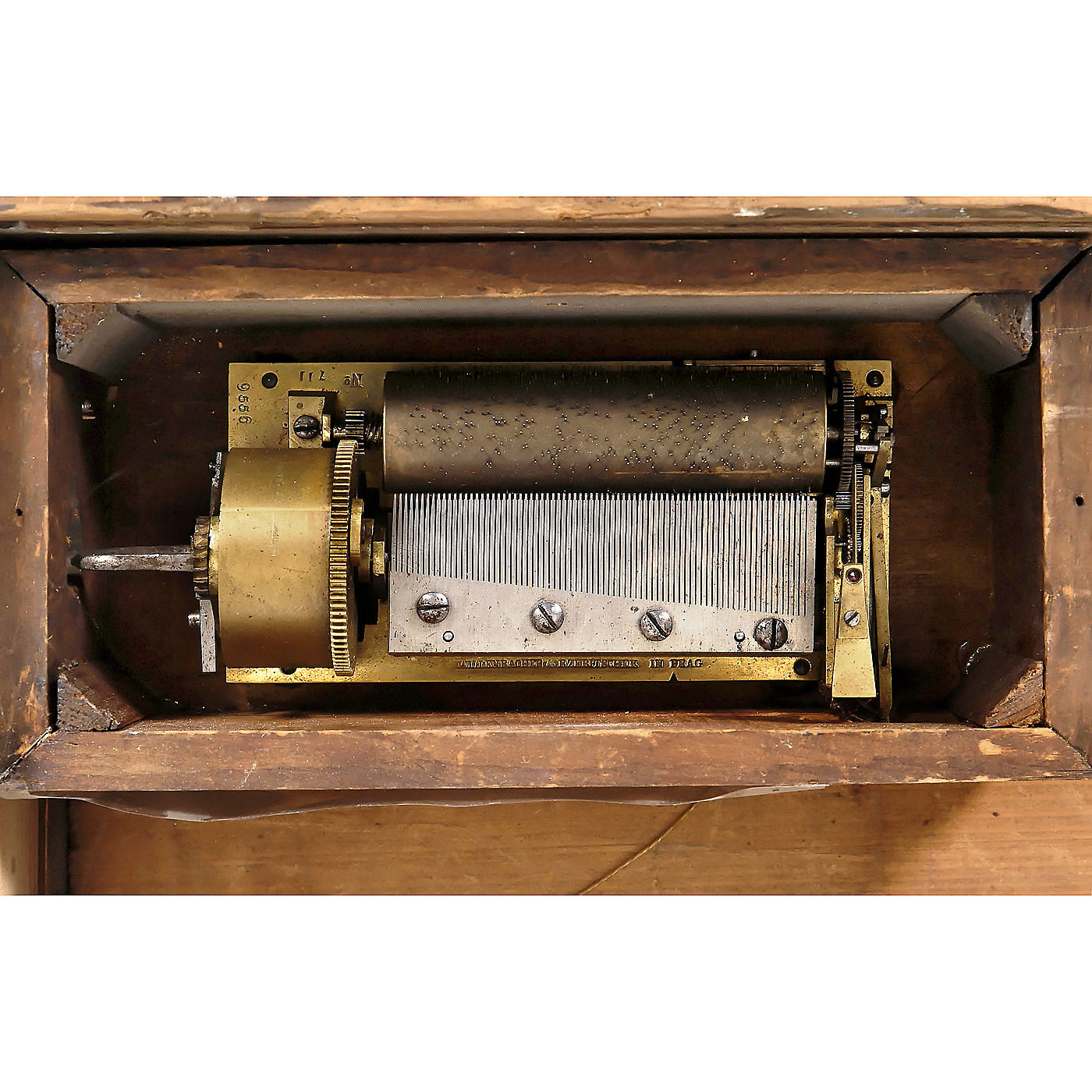
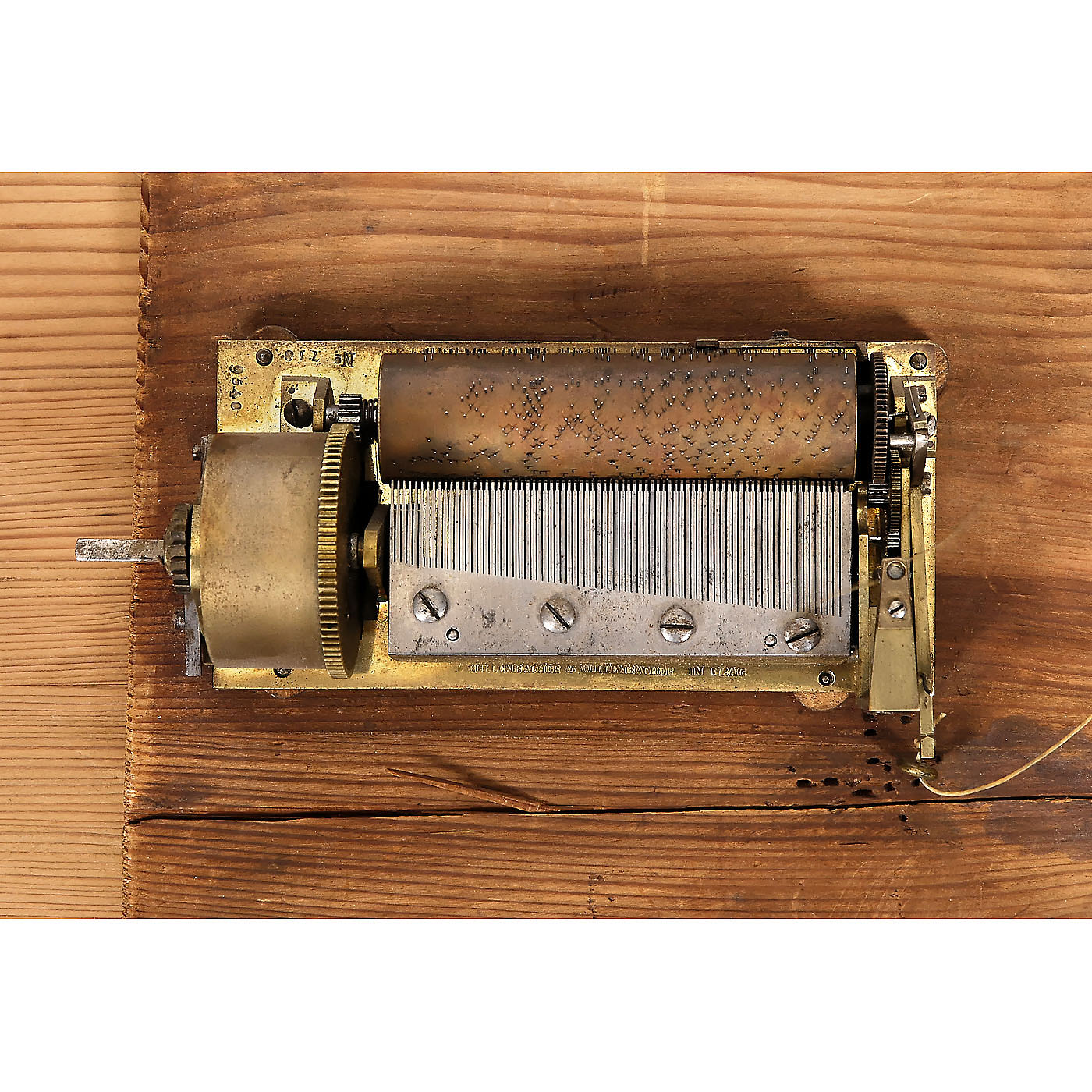
Signed "Ernest Kotzaurek Fecit" (1804-62), detailed three-dimensional picture of St. Stephen's Square, the cathedral, figures and a vista of buildings, with Roman dial in tower, two-train pull-string movement striking hours on gong, silencer and two independent key-wind cylinder musical movements playing two airs each, with pull-string activation and 77 teeth in each comb (both complete), the upper movement stamped "Willenbacher & Willenbacher in Prag", no. 718/9540, the lower movement "Willenbacher & Rzebitschek in Prag", no. 711/9556, overall 32 x 38 in. (81 x 97 cm), cylinders 3 ½ in. (9 cm), fresh, bright colors, musical movements in good playing condition, clock movement untested. With two keys and issue 20 of "Magasin Pittoresque" (c. 1834) illustrating the cathedral by its French name, Saint Étienne. - Biographical details of Ernest Kotzaurek are scarce. Notes by Luuk Goldhoorn suggest that Kotzaurek was born into a glass-making family in Přerov (in today's Czech Republic) in 1804 and that he was a frequent patient in the spa town Karlovy Vary during the 1830s. His reputation as a glass engraver was established by 1830 and he is mentioned in the Viennese "Systematische Darstellung der neuesten Schritte in den Gewerben" of that year: "The hyalographer, Ernest Kotzaurek of Prague, distinguishes himself in the production of glass pictures." - The example offered here is of mixed media and cut-glass with gilt highlights and colred mosaic work to simulate marble. In its palette and subject matter, the image resembles the "Vue d'Optiques" popular during the early 19th century. Indeed, Kotzaurek's work combines the draftsman's mastery of perspective with an artist's eye for detail to create a sense of drama in the busy square. An exceptional musical picture clock. - Literature: Illustrated in Luuk Goldhoorn, "Die Österreichische Spielwerkemanufaktur im 19. Jahrhundert", p. 75.

